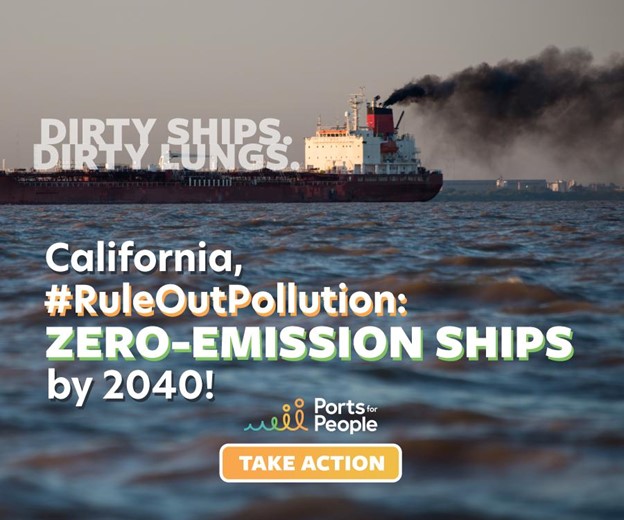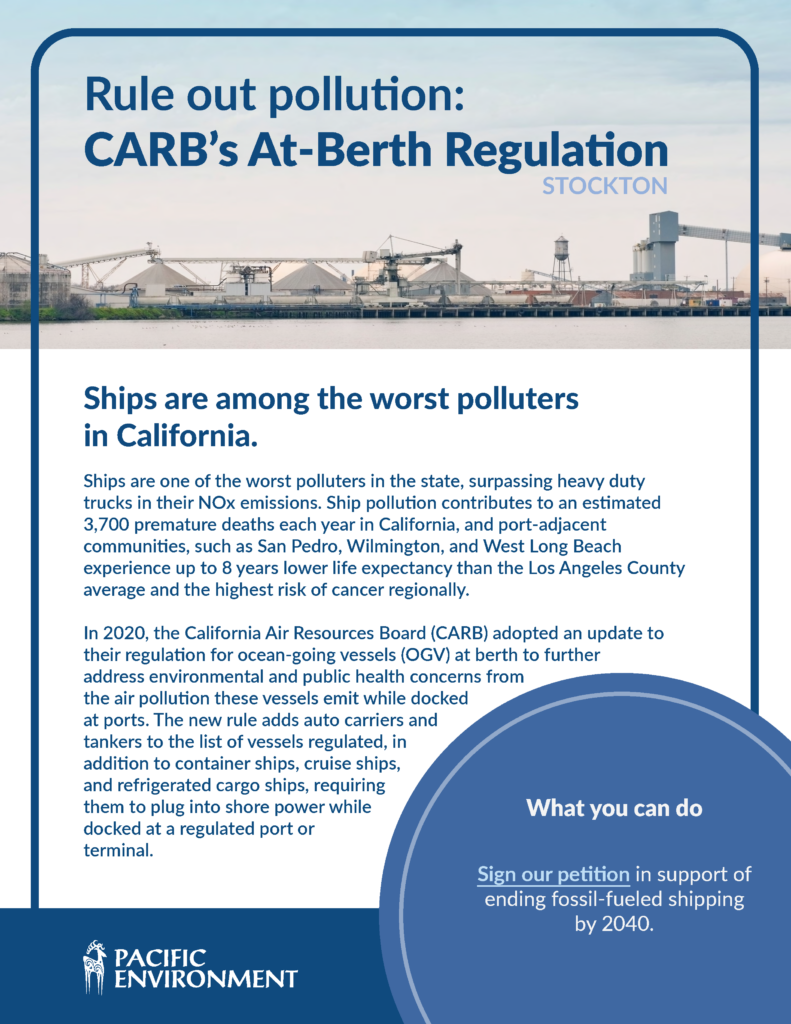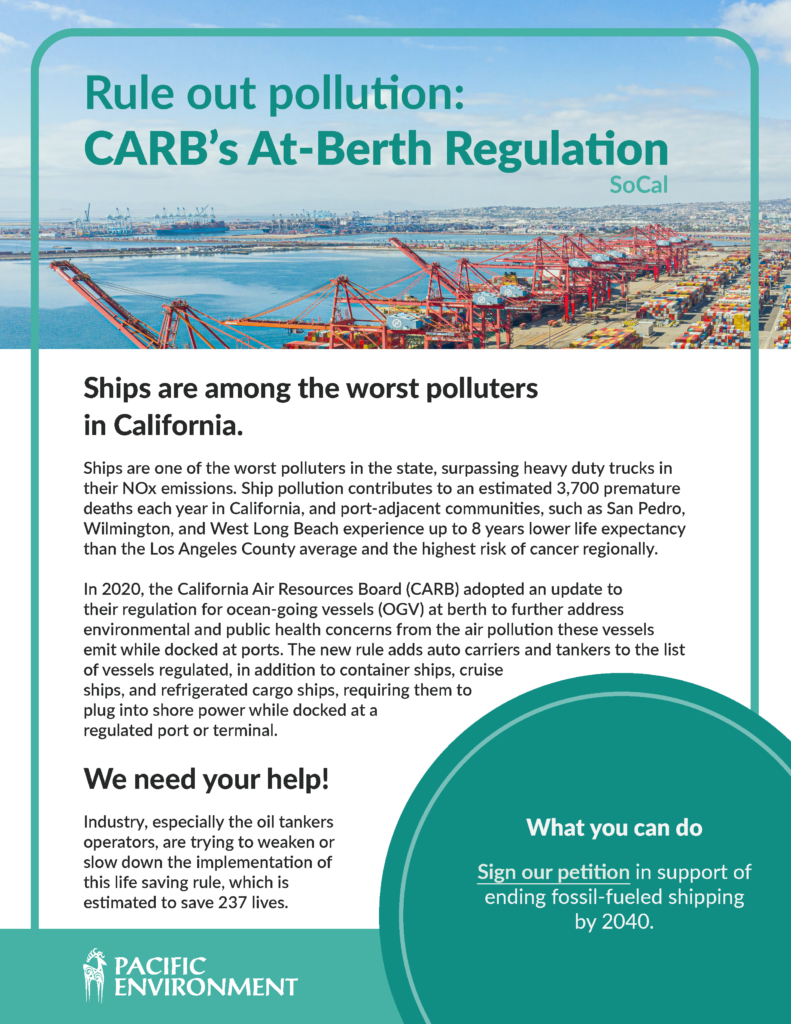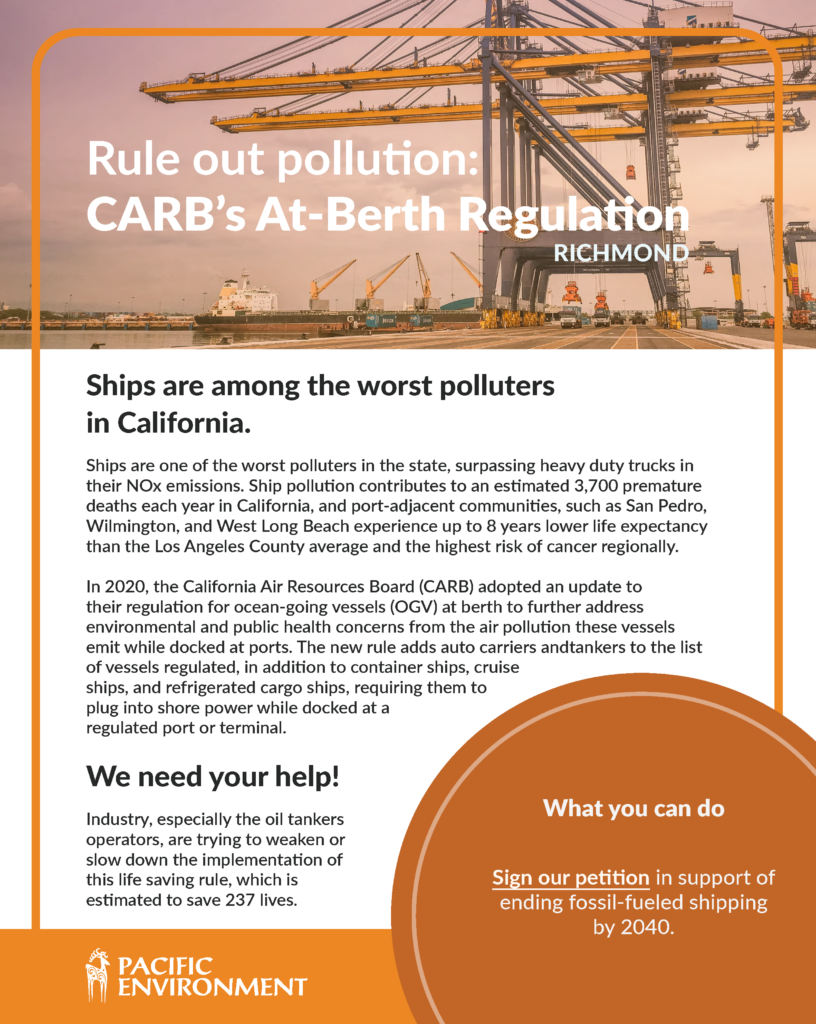Ships are among the worst polluters in California. Ship pollution contributes to an estimated 3,700 premature deaths each year in California. Overall, if ocean shipping were a country, it would be the sixth largest polluter behind Germany. This is why we need ocean ships to move off fossil fuels, stop polluting our ports, and for the California Air Resources Board (CARB) to commit to zero-emission shipping by 2040.
California Must Phase out the Dirtiest Ships & End Fossil Fueled Shipping by 2040 to Save Lives
Ships are among the worst polluters in California. Ship pollution contributes to an estimated 3,700 premature deaths each year in California. Overall, if ocean shipping were a country, it would be the sixth largest polluter behind Germany. In California, ocean-going vessels (OGV) are the top source of cancer-causing diesel particulate matter at the Ports of Oakland, Long Beach and Los Angeles. This is why we need ocean ships to move off fossil fuels, stop polluting our ports, and for the California Air Resources Board (CARB) to commit to zero-emission shipping by 2040.
National and regional organizations are encouraging CARB to make these commitments. The state of California has already shown leadership in cleaning up cars, trucks and trains – dirty diesel ships must be next! The commercial zero-emissions market is maturing and we are seeing a fast-evolving, climate-friendly shift to zero-emission technologies. The time is now to get off of fossil fuels. Read our coalition letter to CARB.
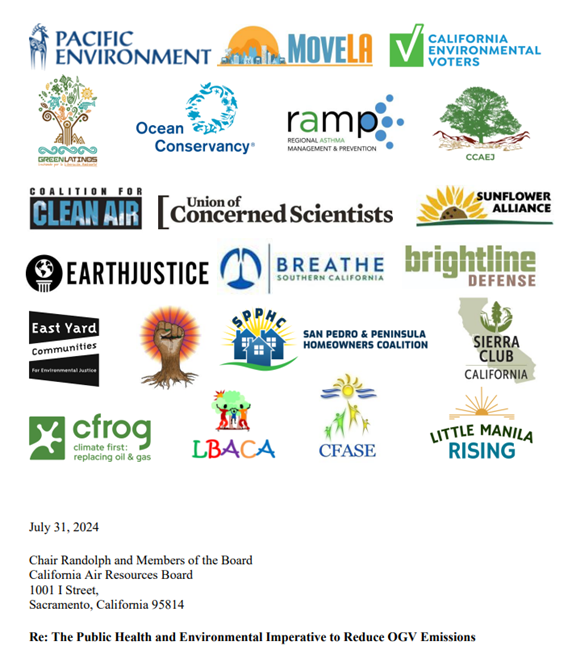
Impacts of Fossil-Fueled Shipping on California Communities
Fossil-fueled ship pollution disproportionately affects portside communities. For example, the communities of San Pedro, Wilmington, and West Long Beach experience up to 8 years lower life expectancy than the Los Angeles County average and the highest risk of cancer regionally. Other portside communities such as Barrio Logan and National City breathe more diesel pollution than 90% of California communities and children experience up to five times more asthma hospitalizations. At the Port of Stockton, OGVs make up 63% of NOx emissions, 62% of PM emissions, and 49% of GHG emissions.
While California has taken important steps to reduce pollution from ships at berth by requiring ships to plug in to shorepower while docked at the port, in-transit pollution remains the largest portion of vessel emissions. Without further regulations, NOx emissions from OGVs are projected to account for 29% of all NOx emissions from mobile sources in California in 2037, exceeding that of all other off-road equipment.
Read our fact sheets for the California Communities of Stockton, SoCal and Richmond to learn more.
Press statements and Media:
- State of California Signals Need for Additional Measures to Tackle Toxic Pollution for Ocean-Going Vessels
- ‘A decade of climate emergency’: California looks to lead regulation of shipping carbon emissions | TradeWinds (tradewindsnews.com)
- Two reports co-released on May 21, 2024 by Goldman School of Public Policy, University of California Berkeley and Energy & Environmental Research Associates delve into policy changes and technology opportunities to decarbonize ocean going vessels. Ocean-Going Vessel Decarbonization | Projects | Center for Environmental Public Policy (CEPP) | Centers | Research and Impact | Goldman School of Public Policy | University of California, Berkeley
- Previous Coalition Letter to CARB (February 10, 2023: Coalition support letter_CARB At Berth Workshop.docx | pacificenvironment.org)
